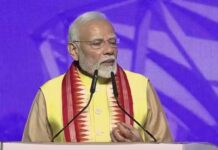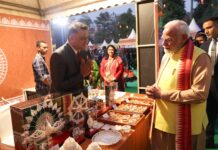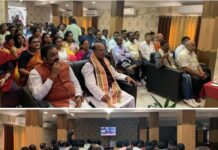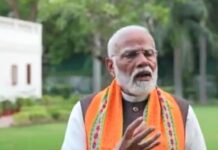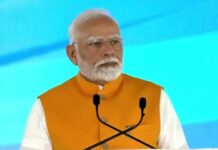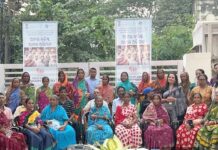By Anurjay Dhal
BHUBANESWAR: The Per-Capita Income of Odisha in 2019.20 (AE), is expected to reach Rs.1, 01,587 up from Rs 95,164 in 2018-19. As per an advance estimate, 2019-20, the State’s per-capita net domestic product at the current price is estimated to grow at 6.75%. During the same period, the per capita net national income is estimated as Rs 1,35,050 making an increase of 6.84% as compared to Rs 1, 26,406 during 2018-19, said the Economic Survey Report tabled in the State Legislative Assembly on Monday by Finance Minister Niranjan Pujari.
The Minister however said State’s GSDP growth rate dipped and economic growth is expected to grow at 6.16% as against 7.9% in 2018-19 (1st RE) due to lower Agriculture production being affected by cyclone and deceleration in mining and manufacturing.
According to the report, the Services sector is the largest contributor to Odisha’s GVA with 40.51% followed by Industries sector with 39.60% and Agriculture Et allied with 19.90% in 2019-20(AE). During the same period, Agriculture & allied is expected to achieve growth at a constant price (2011-12) of 7.61%, while the Industries sector will attain growth of 4.88% and services sector with 6.84%.
Whereas at the National level the growth of the Agriculture, Industry and Services sector will attain 2.80%, 2.49% ft 6.86% respectively. As the agriculture and industry sector is concerned, Odisha surpasses all India growth whereas, in the services sector, the States’ growth is at par with National figure.
There is scope to further tap the service sectors’ growth potential by providing supporting infrastructure. The expansion of the services sector will also have immense potential to generate employment in the formal sector.
The average annual inflation in Odisha based on CPI remained stable, between 2% and 3%, during 2017-18 to 2018.19 and increased to 3.8% in 2019-20 (till Dec). Inflation in India recorded at 4% in 2019- 20(up to Dec 2019). Inflation in rural Odisha was mainly driven by miscellaneous groups followed by food items and fuel & light, whereas inflation in urban Odisha is influenced by miscellaneous groups followed by housing and food items, the reports further stated.
Odisha’s Economic Outlook
Odisha is slowly moving towards the production of high-value crops. The share of cropped area under vegetables, fruits, oilseeds, pulses has increased from 42.37%in 2014-15 to 43.79% in 2018-19. There has been a remarkable increase in the production of livestock products like milk, egg, and meat. Fish production has increased from 6.85 lakh MT in 2017-18 to 7.59 lakh MT in 2018-19.
The Government has given due importance for housing to all eligible households living in kutcha houses or homeless through programmes like Pradhan Mantri Awas Yojana (Grameen), Biju Pucca Ghar Yojana, Pucca Ghar Yojana (Mining) and Nirman Shramik Pucca Ghar Yojana. From 2014-15 to 2018-19, the record target of 21.76 lakh houses have been constructed to help people live better lives.
The industrialization scenario of the State is changing at a rapid pace. The share of the Industry sector in State Gross Value Added (GVA) has remained around 39.6% since 2011-12.
To provide impetus to State’s industrialization, the Government organizes Make in Odisha Conclave since 2016 and is emerged as the number one State in the country in terms of attracting investments during April-Sept 2019 as per CMIE.
To provide clean power to all, the mission of “Electricity to All” is bearing fruits. Out of 47,675 villages in Odisha, 99.64% inhabited revenue villages have been electrified by the end of 31st March 2019.
Odisha is steadily heading towards transforming the lives of urban poor to liveable habitats to improve the lives of the poor through JAGA Mission, being acclaimed as the world’s largest slum land titling project.
The Government has embarked on an ambitious ‘Drink from Tap’ mission. It aims to provide drinking water supply to all urban households through metered connections. In FY 19-20, pilots have been initiated in 8 zones across 2 ULBs (Bhubaneswar and Puri) covering approximately 22,000 households and a population of approximately 1.2 lakh urbanites.
Through “Jal Jogan Melas”, the Government aims to all the ULBs in the State to achieve 100% coverage of all Urban Households under the Piped Water Supply Scheme in the State by providing new connections in the project areas exemption of connection fee for the urban poor where distribution networks have been laid and also in those areas where distribution network is existing but sufficient connections have not been given.
Trade and repair sector is the largest contributor to the service sector’s output in the State and grew at an average rate of 7.9%. The tourism sector is also a major engine of economic growth in the services sector that contributes significantly in terms of GSDP, foreign exchange earnings, and employment. About 155.10 lakh domestic tourists and 1.14 lakh foreign tourists visited Odisha during 2018-19, registering a growth rate of 8.75% and 10.41%, respectively.
The State had a total road length of 2,68,656 kms by the end of 2018-19, growing 1.65% over 2017-18. Other District Roads (ODR) witnessed the highest growth of 25.06% over the last year. Thus emphasis has been given to road infrastructure in the State that provides last-mile connectivity.
Odisha became the first state in the country to adopt the Self Help Groups (SHG) based model for financial inclusion to extend banking services in the unbanked areas. The SHGs formed under the Odisha Livelihood Mission (OLM) will provide banking services. OLM has entered into an agreement with SBI, Odisha Gramya Bank (OGB), Utkal Gramya Bank (UGB) and other banks for financial inclusion. During 2018-19, a total of 1,31,027 SHGs have been credit linked with banks, availing a total credit of Rs,1,98,270.87 lakh.
The State bagged national award for outstanding performance in Financial Inclusion under DAY-NRULM in 2018. 14. The government of Odisha has maintained its share of social spending in overall expenditure. As per budget estimate 2019-20, social sector spending was 42.5% of total expenditure as against 43.3% in 2018-19(RE).
Odisha has made significant strides in improving health outcomes through a particular emphasis on health sector reforms.
Woman and child nutrition is a major public health challenge faced by many developing states including Odisha. The State Government accorded priority to nutrition by increasing total allocation for nutrition from 41.35% in 2016-17 to 49.77% in 2018-19.
PTR (Pupil Teacher Ratio) is defined as the average number of pupils per teacher in a school in a given year. The RTE Act prescribes that the PTR should be 30:1 and 35:1, at the primary and upper primary levels, respectively. Odisha’s PTR for the corresponding levels stood at 20:1 and 23:1 during 2018-19, which are better than the prescribed norms. At the secondary level, PTR in Odisha was 23:1 during this period.
Gender Parity Index (GPI) in education reflects the discrimination against girls in access to educational opportunities. Closer the GPI is to one, higher is the State to achieving gender equality. The GPI of primary education, upper primary education and secondary education are 0.93, 0.92 and 1.01 respectively during 2017-18.
Learning outcomes in Odisha seem to improve with advancements in the education level in the case of Maths and Science subjects. The NAS, 2017 for Class VIII indicates that, on average, the percentage of correct responses in Maths by students in Odisha (44) was higher than the national average (42). In the case of science, the scores were the same.
Mission Shakti has become a silent revolution in the state transforming the lives of women with 6,02,013 WSHGs comprising 70,00,010 women. 3.11 lakh SHGs have received financial assistance for digital empowerment during 2018-19 in the first phase. Remaining SHGs will be provided with financial assistance in the financial year 2019-20 in the second phase.
To make the governance more people-centric, the Government has launched Mo Sarkar programme, in which ministers and higher authority would dial common citizens to seek feedback on the kind of response they get during recent visits to Government offices.
With the availability of resources and opportunities ahead, a more proactive approach in advocating policies and development of institutions and administrative systems, enhanced collaboration with national and international institutions could lead the State to one of the best performing economies across the globe.
In order to ensure tribal development more effective, inclusive and participatory, the Government has set up Special Development Council in 9 Districts of the State having the highest concentration of tribal population, such as Mayurbhanj, Kenonjhar, Sundergarh, Kandhamal, Gajapati, Koraput, Rayagada, Nabarangpur, and Malkangiri. During 2017-18 and 2018-19, projects like 2974 scared groves, 598 tribal weekly markets, 445 tribal cultural clubs, exposure visit of 10724 Tribal delegates completed.
Despite the development of expenditure requirements, the State has shown effective fiscal discipline. The State has successfully managed to maintain an average revenue surplus (as a percentage of GSDP) i.e. 2.5% during the last 5 years, (from 2014-15 to 2018- 19) while all states average shows a deficit.
Odisha is the most affected state by natural disasters and is therefore experienced the greatest human and economic impacts. During the last decade, the State has faced one or other forms of disasters like floods, cyclones, tornado or drought year after year. The Government takes various measures to face natural disasters and to minimise loss of life and property by creating disaster-resilient infrastructure.


